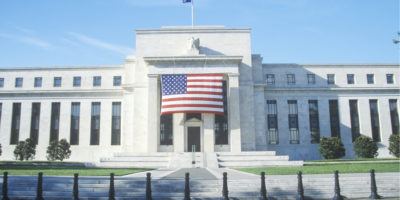Debt Ceiling Hit: Treasury Likely to Run Out of Cash by November
The recent temporary reduction in intragovernmental debt put the national debt below the debt limit. But extraordinary measures are limited by the amount of intragovernmental debt held by federal agencies. The Bipartisan Policy Center and the Congressional Budget Office both estimate that at the current pace of government spending, extraordinary measures will be exhausted by the fall. The day that the Treasury runs out of cash is known as the X date.
When extraordinary measures are exhausted, the Treasury will be limited to daily tax receipts. Daily tax receipts will fall well short of expenses. The Treasury may default on obligations, including debt-service payments. Congress must raise the debt ceiling or pay off current debt in the coming months to avoid a default. Political gridlock on whether to raise the debt ceiling or reduce the national debt will disrupt the global financial system because Treasury securities are a pillar of international finance. A default would further disrupt consumer and business credit markets around the world.
Before the First World War, Congress authorized financing for large purchases such as infrastructure projects and wars. Congress thus controlled the amount of debt the Treasury could issue as well as maturities and interest rates. When the United States entered the First World War in 1917, Congress allowed the Treasury more independence to issue debt.
Congress passed the Liberty Bond Act, which allowed the Treasury to issue war debt up to a limit. The act avoided the long process of congressional approval to issue war debt. In 1939, an overall debt ceiling was established. The debt ceiling included both short-term and long-term Treasury debt held by the public and government agencies. Soon after the debt ceiling was established, though, the federal government began raising it. The first increase in the debt ceiling came with the Second World War. After the war, Congress kept raising the debt ceiling. But raising the debt ceiling has become a contentious issue.
Since the debt ceiling was established in 1939, it has been raised 44 times under Republican presidents and 39 times under Democratic presidents. Both Congresses with Democratic and Republican majorities have authorized these increases, both when their party controlled the White House and when it did not. Until the 1990s, the debt ceiling was increased without serious contention. Then in 1995, President Clinton and Speaker Gingrich came to an impasse on spending and debt. The impasse caused the federal government to furlough workers and suspend non-essential services.
In 2011, contentious negotiations on raising the debt ceiling cost the United States its AAA credit rating. Republicans in Congress had refused to increase the debt ceiling without substantial spending cuts. As the fight between President Obama and congressional Republicans dragged on, Standard and Poor’s downgraded the Treasury securities because of the drawn-out debate and lack of a plan to stabilize government finances.
Even after the credit-rating downgrade, the White House and Congress continued to struggle with the debt ceiling. In 2013, the federal government shut down for 16 days before the government raised the debt ceiling. Only two years later, the president signed the 2015 Bipartisan Budget Act, which raised the debt ceiling, after tense negotiations. But as with all increases in the debt ceiling, the act failed to address long-term fiscal challenges facing the United States.
During the Great Recession and subsequent weak recovery, the budget deficit averaged 5.5 percent of GDP. Budget deficits in recent years have been larger than average. Since 1929, the budget deficit has averaged 3 percent of GDP. Large deficits have pushed the national debt to record levels. The debt now stands at nearly $19 trillion. In the third quarter of 2016, the debt-to-GDP ratio reached 104.8 percent. It began increasing dramatically at the start of the Great Recession. In the fourth quarter of 2007, the debt-to-GDP ratio was 62.8 percent.
In the third quarter of 2016, debt held by the public accounted for 86 percent of government debt. Intragovernmental debt made up the remainder. As mentioned above, extraordinary measures focus on temporarily reducing intragovernmental debt. How does the Treasury implement extraordinary measures?
In effect, extraordinary measures work like an IOU. The Treasury borrows from government agencies such as pension funds and returns the money with interest when the debt ceiling is raised. Take the Federal Employees Retirement System, or G-Fund. The G-Fund contains intragovernmental Treasury securities as part of the Thrift Savings Program. The securities in the G-Fund are rolled over every day. As an extraordinary measure, the Treasury can choose to not roll over some or all of the balance in the G-Fund. If the G-Fund has $100 million in Treasury securities, the Treasury can choose to only roll over $60 million. Now the total debt falls by $40 million. The Treasury can borrow $40 million from the public to meet expenses. The Treasury must return the difference to the pension fund with interest when the ceiling is raised.
According to the Bipartisan Policy Center, the Treasury will use extraordinary measures to reduce intragovernmental debt in three agencies. Extraordinary measures could provide up to $391 billion in additional borrowing capacity for the Treasury. By far the largest source of extraordinary measures is the G-Fund. Suspending debt issuance to the G-Fund would create $224 billion of space under the debt ceiling. The next-largest source of funding is the Civil Service Pension and Disability Fund. The Treasury could choose not to reinvest intragovernmental debt held by the Civil Service Pension and Disability Fund. This would free up $145 billion of borrowing capacity. The last of the three government agencies is the Exchange Stabilization Fund. The ESF is used for foreign-currency transactions. Extraordinary measures applied to the ESF could reduce the debt by $22 billion.
When the options of using extraordinary measures and spending cash are exhausted, the Treasury will have to suspend payments or default. The government has regular monthly expenses including payments for programs such as Medicare and Social Security. The government also has monthly payroll to meet and invoices for goods and services to pay. Suspension or default would lead to difficulty in the economy and financial markets.
What would a protracted debt ceiling debate and potential or actual default do to global markets? The consequences would be like those from the 2011 and 2013 debt ceiling debate. In 2011, the downgrade of the U.S. credit rating by Standard and Poor’s threw doubt across financial markets. The rating agencies questioned Treasury securities, as well as transactions that used government debt as collateral such as repurchase agreements. Repurchase agreements allow broker-dealers to match buyers and sellers. Broker-dealers post Treasury securities as collateral to finance the purchase and sale of equities and bonds. If the risk of a Treasury default rises, then market participants will be forced to post more collateral. A higher default risk means higher interest rates. As interest rates rise the price of Treasury securities fall. This means more collateral must be posted.
Higher interest rates on Treasury securities will push up credit card rates, auto loan rates, and mortgage rates and other consumer-loan rates. And in fact, the Government Accountability Office found that the 2013 debt ceiling debate led to lower demand for Treasury securities and higher interest rates. The higher interest rates on Treasury securities cost the taxpayer between $38 million and $70 million. If the government suspends payments to workers or retirees, consumer spending and thus economic output will decline.
Throughout history, governments have been willing to run large debts. In the past, governments have resorted to currency debasement and inflation to reduce the real value of their debt. Looking ahead, the federal government is likely to raise debt ceiling and add to the debt. The federal debt presents a risk to economic growth by crowding out the private sector.








